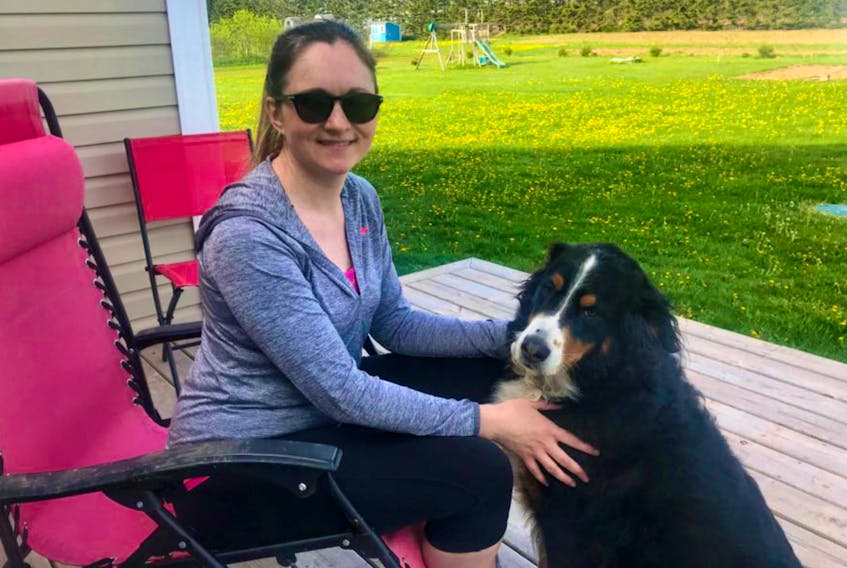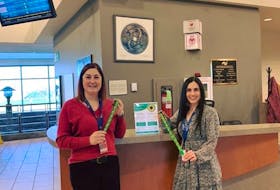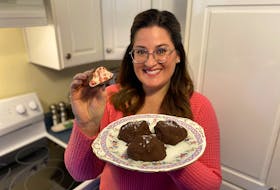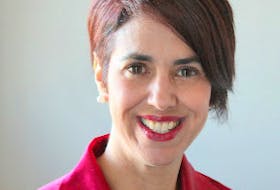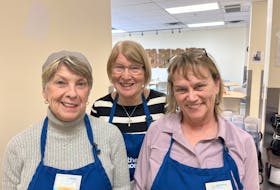After spending weeks at home due to COVID-19 safety measures, many are now easing out of isolation and welcoming the warmer weather.
Cindy Day, the chief meteorologist for SaltWire Network, recently announced, "It's going to be a hot, dry summer" for Atlantic Canada. But protecting skin from overexposure to the sun and the damaging ultra-violet (U.V.) light is an afterthought for some.
It is a worrisome trend, as the deadliest type of skin cancer is on the rise: melanoma.
Danette Murray, from Summerside P.E.I., warns that we need to stop soaking up the sun and tanning beds. She speaks from experience after receiving daunting news at age 29.
"I had a mole on my arm for as long as I could remember, about the size of the top of a pencil, and a doctor recommended I have it looked at by an expert, so I was referred to Dr. MacLean at Prince County Hospital," shared Murray.
Within one month, Murray's life changed drastically, as the diagnosis came back as melanoma.
"Before this happened, I thought I was invincible. I was too young for cancer. I could tan at the beach, tan in tanning-beds, and I could not wait to get that 'good glow' every year. I used to buy sprays to help get an even better tan. I was very wrong."
She underwent several scans to ensure the cancer had not spread anywhere else.
Murray was lucky to have – by chance – been treated early.
"Since then, a dermatologist in Fredericton followed my progress. Then a dermatologist in Charlottetown, where I make annual visits for re-checks. I have had nine other moles removed and biopsied, which all came back negative."
Over the last seven years since her diagnosis, Murray shields her skin and continues to warn others.
"I no longer sit in the sun without proper protection such as a hat, sunglasses, shade, and, most importantly, sunscreen. I have instilled the importance of sunscreen in my two kids. And, my husband now packs a bottle of sunscreen when he heads to the potato fields."

Could happen to anyone
Despite the myths, melanoma has no age, race, or gender limit.
“And, if you are using tanning-beds there is a 75 per cent higher risk,” said Dr. Julia Carroll.
Dr. Carroll is a Fellow of the Royal College of Physicians and Surgeons (FRCPC) and an active member of the Canadian Dermatology Association, Toronto Dermatologic Society, American Society of Dermatologic Surgeons, and the American Academy of Dermatology.
Before her dermatology training, she completed medical school at Dalhousie University, and still calls Nova Scotia “home.” Dr. Carroll said there are three ways to block the harmful U.V. rays.
"First, generously apply sunscreen. SPF (sun protection factor) 50-plus every two hours if you are out in the sun."

And for infants, the first six months their sensitive skin must avoid direct sun exposure.
"If, for some reason, you got into a situation where you could not protect the baby from the sun, sunscreen is a better option than letting that baby burn. And after six months, it is the same as an adult," Dr. Carroll added.
She noted that even when it is overcast, there is still a chance of severe sunburn, including being near water because of the reflection.
“U.V. rays can get through clouds, fog, and haze. Water, sand, concrete, and especially snow can reflect, and even increase, the sun’s burning rays,” according to the Melanoma Network of Canada.
Second, cover-up.

"With protective UVA (ultraviolet A-rays) and UVB (ultraviolet B-rays) clothes. And, there are clothes with U.P.F. labels, which is an 'ultraviolet protection factor.' But an easy way to determine if your clothing is protective is to hold it up to the light. If you see the light coming through the fabric, you have less protection from the sun."
The third is to seek shade.
"From the peak times of 11 a.m. to 3 p.m. from March to October. You should do your best to avoid sitting in the sun or playing sports during those hours."
Dr. Carroll said to follow the ABCDE rule when examining yourself:
- Look for Asymmetry
- If the Borders are irregular
- The Colour is changing
- The difference in Diameter, and
- If the spot is Evolving.
“It’s really important to get to know you skin and check regularly for any changes,” she said.
Hope is Alive, by the Melanoma Network of Canada. Stories of individuals whose lives were changed by melanoma have been captured in the video, which includes voices from patients, their caregivers, relatives, and friends. The Melanoma Network of Canada’s video helps to spread a message of hope.
“In North America, one person dies from melanoma every hour,” according to the Melanoma Network of Canada. But there is light at the end of the tunnel. If tested early for melanoma, “survival rates go up by 85 per cent.”
“It’s so important to protect ourselves and our loved ones while enjoying our time outdoors,” says Murray.
To learn more about melanoma, visit www.melanomanetwork.ca or contact their patient care specialist (toll-free) at 1-877-560-8034.

